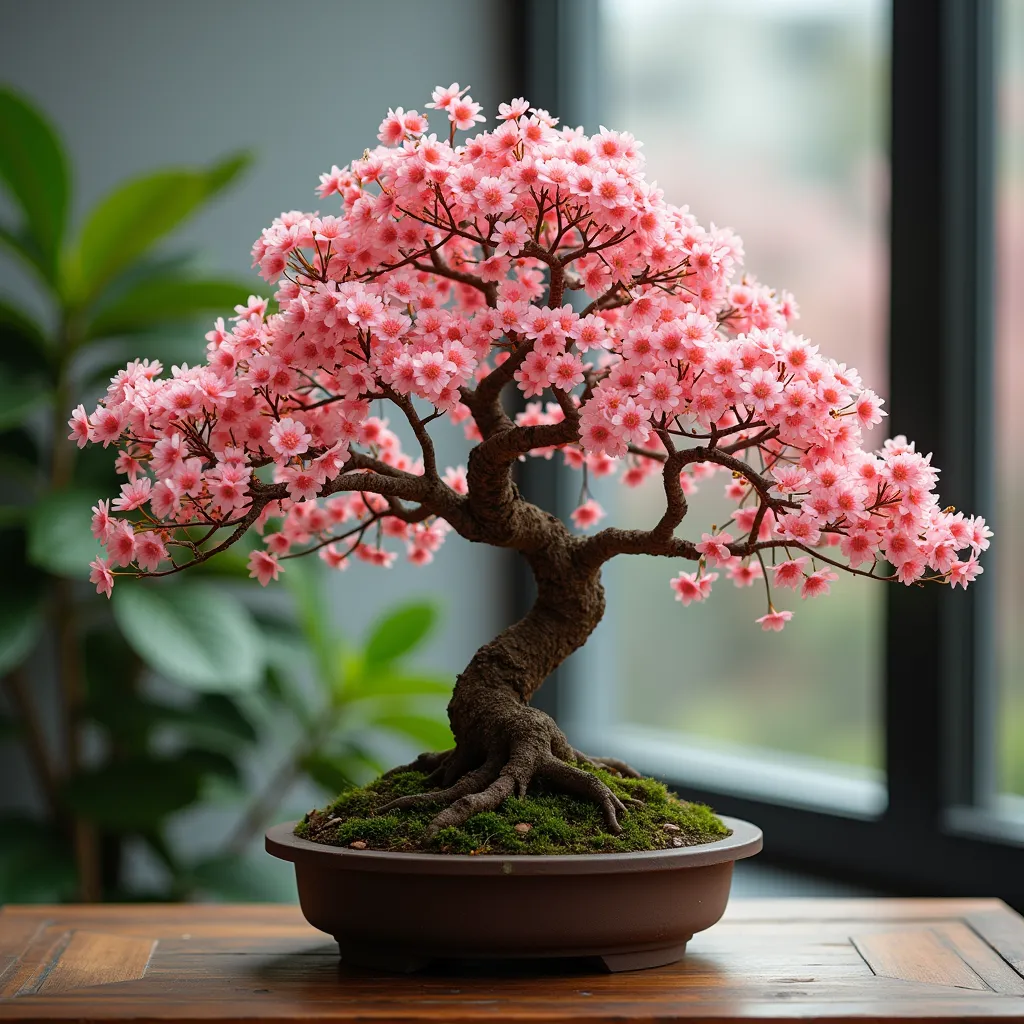Styling Techniques for Your Fuji Cherry Bonsai: A Complete Guide
Creating a beautiful bonsai tree requires a combination of patience, skill, and knowledge of specific techniques. In this guide, we will explore the styling techniques for Fuji Cherry Bonsai, specifically focusing on pruning, wiring, and repotting.
The Fuji Cherry, or Prunus sisa, is a stunning tree that can be transformed into a captivating bonsai with the right care and styling methods. This guide will provide you with a comprehensive understanding of how to shape and maintain your Fuji Cherry Bonsai, ensuring it thrives and showcases its natural beauty.
TOC
- Understanding the Fuji Cherry Bonsai
- Pruning Techniques for Styling
- Wiring for Branch Positioning
- Repotting Your Bonsai
- FAQ
- Conclusion
Understanding the Fuji Cherry Bonsai
The Fuji Cherry Bonsai, scientifically known as Prunus sisa, is a popular choice among bonsai enthusiasts due to its beautiful flowers and manageable size. These trees typically bloom in early spring, showcasing stunning blossoms that can enhance any garden or indoor space. At around five years old, these trees are often ready for styling, making them an excellent option for both beginners and experienced bonsai practitioners.
When selecting a Fuji Cherry for bonsai, it’s essential to consider the tree's health and structure. Look for trees with good ramification, which refers to the branching structure that allows for a more intricate design. The speaker in the video mentions that these trees can be relatively inexpensive, typically ranging from $10 to $15, making them accessible for those looking to start their bonsai journey.
Pruning Techniques for Styling
Pruning is a critical step in the bonsai styling process, as it helps shape the tree and encourages healthy growth. In the video, the speaker demonstrates how to assess the tree's structure and make decisions about which branches to keep or remove. The goal is to create a balanced design while allowing for future growth.
Key pruning techniques include:
- Removing Unnecessary Branches: Identify branches that are too thick or parallel to one another, as they can detract from the overall design. In the video, the speaker removes one of the two parallel trunks to create a more defined main trunk line.
- Cutting at an Angle: When pruning, it’s essential to cut branches at a slight angle to promote healing and reduce the risk of disease.
- Creating Cuttings: Larger branches that are removed can be used as cuttings for propagation. The speaker suggests dipping thicker cuttings in rooting hormone before planting them in soil.
By following these pruning techniques, you can effectively shape your Fuji Cherry Bonsai and encourage a healthy structure.
Wiring for Branch Positioning
Wiring is another essential technique in bonsai styling, allowing you to position branches in a way that enhances the tree's overall appearance. The speaker emphasizes the importance of selecting pairs of branches of similar thickness for wiring, as this creates a more harmonious look.
When wiring your bonsai, consider the following steps:
- Start with Main Branches: Begin by wiring the main branches, as they will set the foundation for the tree's design.
- Use Appropriate Wire Thickness: Thinner branches require thinner wire, while thicker branches need more robust wire to hold their shape.
- Bend with Care: Gently bend the branches into the desired position, ensuring not to damage the bark or structure of the tree.
By mastering the wiring technique, you can create a dynamic and visually appealing Fuji Cherry Bonsai.
Repotting Your Bonsai
Repotting is a crucial aspect of bonsai care, especially for young trees like the Fuji Cherry. The speaker discusses the best times to repot, which include early spring and after flowering. Repotting allows for better soil drainage and root health, which are vital for the tree's growth.
When repotting your bonsai, follow these steps:
- Choose the Right Pot: Select a pot that complements the tree's design. The speaker suggests using a light glazed pot to match the flowers.
- Prepare the Soil: Use a well-draining soil mixture, such as a blend of akadama, lava rock, and pumice, to promote healthy root growth.
- Anchor the Tree: Secure the tree in the pot using long wires to ensure stability.
By repotting your Fuji Cherry Bonsai correctly, you can enhance its health and longevity.
FAQ
What is the best time to prune my Fuji Cherry Bonsai?
Pruning is best done in early spring before new growth begins.
How often should I repot my bonsai?
Young bonsai trees should be repotted every 1-2 years, while older trees can be repotted every 3-5 years.
Can I propagate my Fuji Cherry Bonsai from cuttings?
Yes, larger cuttings can be dipped in rooting hormone and planted in soil for propagation.
What type of soil is best for bonsai?
A well-draining inorganic mixture, such as akadama, lava rock, and pumice, is ideal for bonsai.
How do I know if my bonsai needs water?
Check the soil moisture; if it feels dry to the touch, it’s time to water your bonsai.
Conclusion
Styling your Fuji Cherry Bonsai involves a combination of pruning, wiring, and repotting techniques that can significantly enhance its beauty and health. By understanding the specific needs of this tree and applying the techniques discussed, you can create a stunning bonsai that showcases the natural elegance of the Fuji Cherry. Remember to be patient and attentive to your tree's growth, as bonsai styling is a journey that requires time and care. With practice and dedication, your Fuji Cherry Bonsai will flourish and become a cherished part of your collection.

